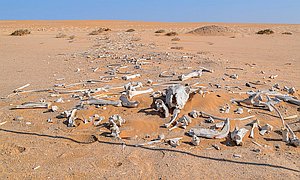One of the largest fossil finds in California

Described as a hugely significant find, and one of the largest in California’s history, a new fossil site is attracting considerable attention. In the summer of 2020, a water district ranger discovered a grove of petrified trees close to the Mokelumne River, and subsequently thousands of bones beside it.
Russell Shapiro, a geology professor at California State University, was shocked at the animals found. “It’s pretty unique,” Shapiro said. “It’s an extremely rich site.” The list of fossils includes horses, camels, rhinoceros, tortoise, mastodons, fish, and birds, which rightly led to it being called a zoo. When asked how so many animals could have been buried together, Shapiro said it was possible they were all trapped in a volcanic mudflow.
Of course, there is no slow and gradual process that can bury so many animals and so much vegetation together. Any such event would have to be large in scale and rapid in depositing the mud. This means it did not form over millions of years as commonly understood. Noah’s Flood, some 4,500 years ago, provides the exact conditions for such rapid burial of the range of animals and plants discovered in California.
- McCormick, E., How a ranger stumbled upon one of the largest fossil finds in California; theguardian.com, 26 May 2021.


Readers’ comments
Comments are automatically closed 14 days after publication.